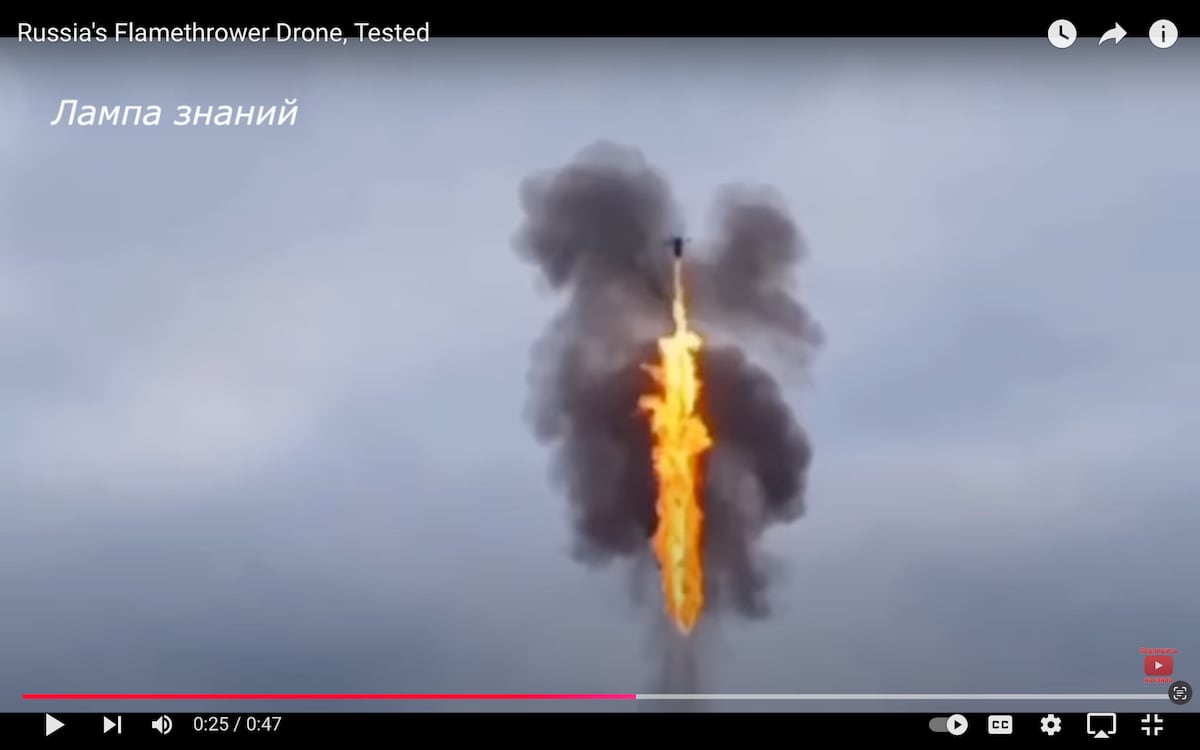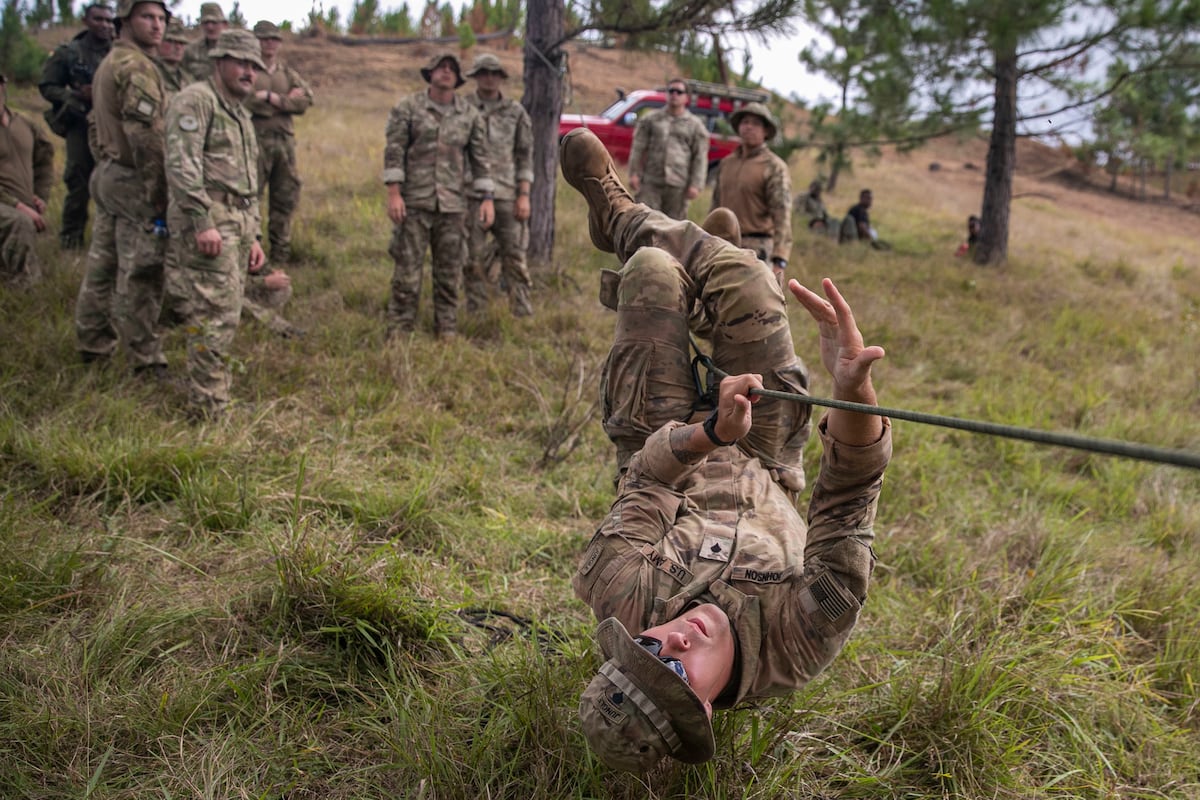If a collection of soldiers and scientists are successful, troops may never again have to run, on foot, into a breach, swinging a grappling hook in a scene resembling medieval foot soldiers breaking through enemy fortifications.
Instead, soldiers of the future may pilot explosives-laden drones and robotic bulldozers into the tangle of concertina wire, steel barricades and landmines.
Over the past nine months, the 264th Engineer Clearance Company, with the 20th Engineer Brigade at Fort Liberty, North Carolina, began its third phase of human-machine teaming experiments.
RELATED
The Sandhills Project began more than a year ago, when the XVIII Airborne Corps commander tasked the brigade with finding a way to keep soldiers out of the breach, one of the deadliest spots in a combat zone.
While several Army efforts are advancing new technology to carry out this deadly task in the coming years, the brigade is working on how to breach such obstacles now, using the tools and manpower the Army has on hand.
Col. Sean Shields, 20th Engineer Brigade commander, recently laid out modern examples that military experts are witnessing in Ukraine and what it could mean for future U.S. military operations.
In early 2023, when the Ukraine military mounted a counteroffensive against the Russian invasion, Ukrainian troops faced some of the most extensive obstacle networks seen since World War II, Shields said.
Russian troops had constructed multiple barrier lines, one of the largest being the 500-mile-long line of fortifications that stalled any large-scale maneuver against Russian forces.
After kicking off in June, the counteroffensive ultimately failed by the end of the year, with some experts citing Ukraine’s lack of minefield breachers that could overcome Russian obstacles as a reason.
While the U.S. Army does have more tools and trained personnel at its fingertips, leaders don’t want to sacrifice waves of soldiers to advance forces.
“We’ve got to figure out a different way to conduct breaching operations,” Shields said.
Current methods rely on 1950s-era technology, such as the Mine Clearing Line Charge, or MICLIC, a trailer-borne line charge launcher that must be towed to the breach by an armored vehicle.
The device then launches an explosives-filled line overhead and into the obstacles. The line is then detonated and triggers any explosives in its path while destroying other non-explosive obstacles.
That move creates a path for vehicles and units to flow through barriers.
At times, foot soldiers must also hand-carry a grappling hook and line, hurl it over concertina wire barriers and pull the wire out of the path. But these antiquated methods are prone to yielding heavy casualties.
Shields and his team are looking toward defense industry tech to solve that problem.
“One-way attack [drone] launch effects are likely really critical to this,” Shields said.
Command Sgt. Maj. Corey Wilkens, with the 20th Engineer Brigade, oversees the Sandhills Project with Shields. He shared some of the daunting figures on current breaching methods that operational research has shown leaders.
Units must “start” five breaching lanes to ensure they’ll have one successful breach, he said.
That means a division will need to run 15 lanes into barriers to clear at least three lanes, so that three brigade combat teams can maneuver through obstacles, Wilkens said.
That strategy keeps the enemy off balance, so they must cover all five lanes, rather than mass firepower on one lane.
“This makes it very hard for the enemy to pick a lane. And when they target that area, we just switch,” Wilkens said. “The idea is that it’s so overwhelming that they can’t stop it all.”
Over this past year, soldiers have experimented with robotic vehicles, such as the Squad Multipurpose Equipment Transport, which is akin to a robotic mule built to carry food, water and other supplies for soldiers on foot.
Troops have also started working with synchronized aerial drones capable of flying and landing in a pattern aligned with explosives line charges to detonate and clear obstacles.
Some of the key steps, though, happen before the breaching lanes are even initiated.
Wilkens noted that drones with aided target recognition can help identify surface-level obstacles and mines.
They’re also using mines themselves to counter mines.
A system under development can spread 700 mines across more than 3,200 feet in a matter of minutes. Soldiers are still working out the kinks on that system when it comes to avoiding trees and other obstacles, Wilkens added.
Still, there are advantages to using classic bulldozers outfitted with remote-control or even autonomous controlling, Shields said. A hardened bulldozer gives leaders the hope that it will survive the hailstorm of enemy firepower as it approaches the increasingly dangerous breach.
Todd South has written about crime, courts, government and the military for multiple publications since 2004 and was named a 2014 Pulitzer finalist for a co-written project on witness intimidation. Todd is a Marine veteran of the Iraq War.
Read the full article here








Leave a Reply